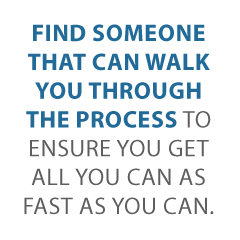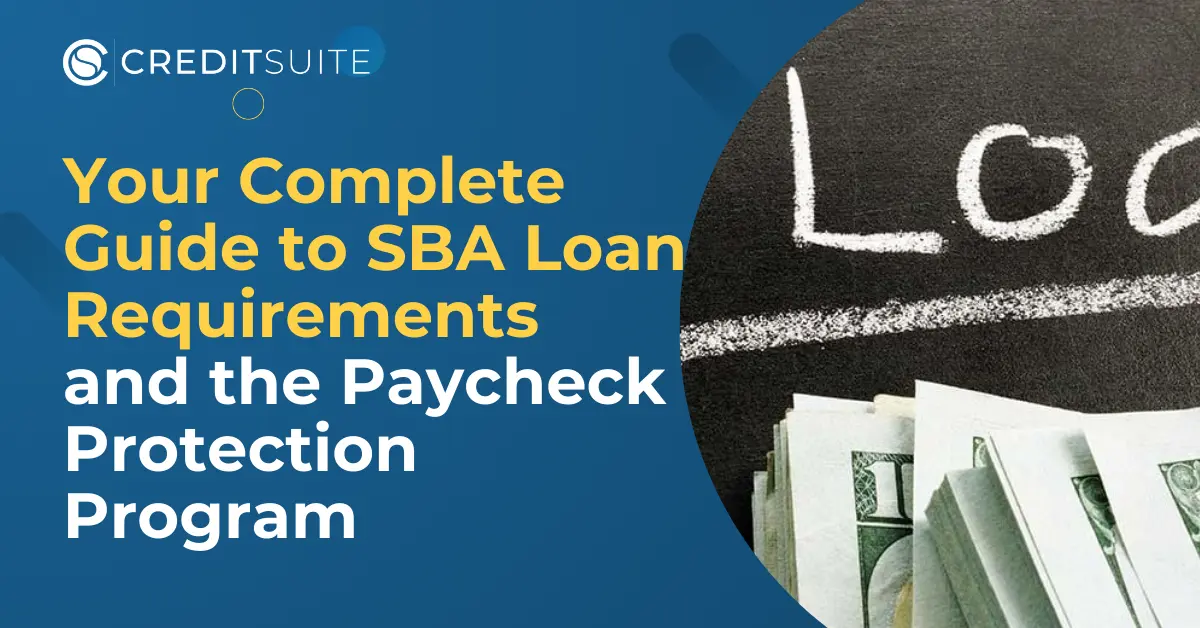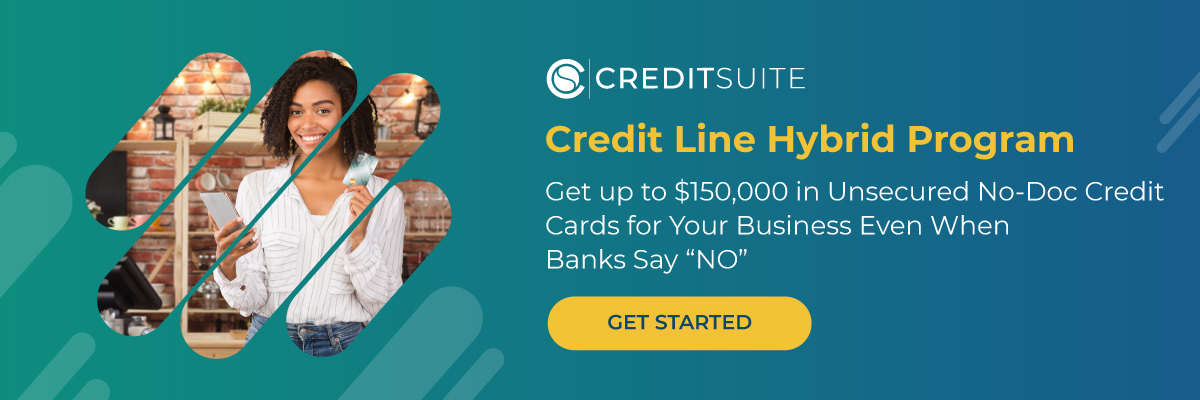The Federal government recently passed the CARES Act. CARES stand for Coronavirus Aid, Relief, and Economic Security Act. This bill addresses and responds to the economic impacts of the COVID-19 outbreak. It authorizes emergency loans to distressed businesses by providing federal funding for forgivable bridge loans, as well as for grants and technical assistance.
Note: the PPP keeps changing, and money sometimes is held up in Congress. Fundability, on the other hand, is achievable and helpful no matter what Congress is doing.
Do You Meet the SBA Loan Requirements for the Paycheck Protection Program and Economic Injury Disaster Loan Program?
Paycheck Protection Program Loans and Economic Injury Disaster Loans are both included in the CARES Act as help for small business owners. What are the SBA loan requirements for each of these business funding programs, and do you qualify?
Credit Line Hybrid Financing: Get up to $150,000 in financing so your business can thrive.
The Paycheck Protection Program (PPP)
The Paycheck Protection Program is a business lending program. It is designed to help businesses keep paying employees even when they are shut down due to the coronavirus pandemic. Allowable uses of funds include:
- Payroll Expenses
- Employee Salaries
- Mortgage Interest
- Rent and Utilities
- Interest on debt incurred before February 15, 2020
The annual percentage rate for these loans is 1%. You do not make any payments for the first 6 months. However, interest does accrue during this time. Loans issues before June 5 must be paid within 2 years. If your loan was issued after June 5, the loan matures in 5 years rather than 2. These loans are up to 100% forgivable with approval.
SBA Loan Requirements: Forgiveness
To request forgiveness, you will submit a request to the lender that is servicing the loan. It should include documents that verify the number of full-time employees and pay rates. Also, you will need to verify the payments on eligible mortgage, lease, and utility obligations. You have to certify that the documents are true. In addition, you will have to show that you used the forgiveness amount to keep employees. If not, you will have to show the funds were used to make eligible mortgage interest, rent, or utility payments. The lender must make a decision on the forgiveness within 60 days.
What Else Do I Need to Know About the PPP and SBA Loan Requirements?
First, the program was recently extended to stay open through August 8, 2020. Not only does that not give you a lot of time, but you need to apply as soon as possible anyway. There is a cap on the funding, and processing applications will take time. Consequently, some lenders are limiting the number of applications they will accept in a single day.
SBA Loan Requirements: Who Can Apply, When Can they Apply, and Where Can They Apply?
Existing SBA lenders started accepting applications on April 3, 2020 from small businesses and sole proprietorships with less than 500 employees. Beginning on April 10, independent contractors and individuals that are self- employees were able to apply through SBA lenders.
Other lenders besides those that are currently working with the SBA are able to get in on the fun as well. In an effort to relieve some of the burden of processing, other lenders are able to enroll in the program and will be able to start accepting applications as soon as they get approval. There is a list of participating lenders, by state, at SBA.gov.
SBA Loan Requirements: What Do You Need to Apply?
It’s pretty straight forward. If you meet the SBA definition of a small business or contractor, you just have to make a few good faith certifications. These include:
- Current economic uncertainty makes the loan necessary to support your ongoing operations.
- You will use the funds to keep workers and maintain payroll or to make mortgage, lease, and utility payments.
- This is the only loan you have or will have under the program.
- You will provide all documentation necessary to verify the number of full-time employees on payroll and how much their payroll costs. Also, you will provide any necessary documentation needed to verify mortgage interest payments, rent payments, and covered utilities for the eight weeks after getting this loan.
- Loan forgiveness will be available for the sum of documented payroll costs, covered mortgage interest payments, covered rent payments, and covered utilities.
- All the information you provide in your application and supporting documents and forms is true and accurate.
- You realize that the lender will calculate the loan amount using the tax documents you submitted. You guarantee that the tax documents are identical to those you submitted to the IRS.
Credit Line Hybrid Financing: Get up to $150,000 in financing so your business can thrive.
SBA Loan Requirements: The Economic Injury Disaster Loan Program
These are funds you apply for directly from the SBA. They can be used to cover the following expenses:
- Payroll
- Fixed Debts
- Accounts Payable
- Other expenses that cannot be paid because of the disaster’s impact. In this case, the disaster being COVID-19.
These loans are available up to $2 million dollars at an annual percentage rate of 3.75%. The terms go up to 30 years. These are not forgivable loans.
SBA Loan Requirements: How Do You Get Started?
Let’s start with what not to do. Do not get in your car and drive to the bank. While most lenders are back open for business inside, it is best to have an appointment to handle a PPP application. Even getting an appointment can take a while however.
The best option is to find someone, a middle man, to help you navigate these loan programs. This way you ensure you get the best lender for you, and you get your SBA coronavirus relief funds as soon as possible.
What Else Does the CARES Act Do?
In addition to the above relief for businesses, the CARES Act also provided relief for individuals. The bill also provided funding for $1,200 tax rebates to individuals, with additional $500 payments per qualifying child. The rebate phases out when incomes exceed $75,000,or $150,000 for joint filers. Most of these payments have already been distributed, but some are still waiting for theirs. The bill also establishes limits on requirements for employers to provide paid leave.
With respect to taxes, the bill establishes special rules for certain tax-favored withdrawals from retirement plans. It also delays due dates for employer payroll taxes and estimated tax payments for corporations.
The bill also authorizes the Department of the Treasury to temporarily guarantee money-market funds.
It’s a Mad World
Here are the facts. The federal government does not want to see a collapse of the economy any more than we do. They want to do what they can to help small businesses. They are taking steps to do just that.
State governments are in the same boat. They want to ensure their states are able to survive and thrive economically despite the coronavirus business impact.
Here’s the bad news, as if you didn’t already know. Businesses lost tons of income during the shut downs caused by the virus. Even opening back up, people aren’t going out as much as they did pre-pandemic. Even more, some states and cities are shutting down certain businesses again. Spending is vastly curtailed. Without a steady flow of income, eventually businesses will not be able to make payments on existing debt.
The good news in light of all of this darkness is that no one wants this to happen. That means measures are being taken to try and stop the spiral. These include those mentioned above. It’s not just the Federal and state governments that are coming to the rescue however. Local governments, along with many charitable and professional organizations, are tossing in life rafts as well.
SBA Loan Requirements: What Can You Do for Yourself?
 However, you have to do your part. You aren’t helpless, though it likely very much seems this way. First, do everything you can to access all the help you can now. Find someone that can walk you through the process to ensure you get all you can as fast as you can.
However, you have to do your part. You aren’t helpless, though it likely very much seems this way. First, do everything you can to access all the help you can now. Find someone that can walk you through the process to ensure you get all you can as fast as you can.
That’s not the end of the story however. You need to do all you can to make certain you can get back to business as usual as fast as you can when this is all over. How do you do that? You need to adapt your business to the current situation. The relief funds can help you. With those funds, you can do many things to not only keep your business afloat, but to make it stronger than ever.
Hard Times Breed Innovation and Adaptation
These are the times that breed creativity and innovation. Use the funds to keep your employees on board, but don’t forget you can use them as well. Is there some way you and your employees can provide products and services for your customers? Can you do anything online or go to customers’ homes?
For example, some local bakeries and ice cream shops have been taking food trucks out to neighborhoods during this time to increase sales. To aid in social distancing, they take orders online first, and of course take all protective precautions.
Beauticians and barbers that are even allowed to open are having to reduce the number of clients they can serve at one time. Of course, they are taking all necessary safety measures to ensure that disease isn’t spreading. Gyms are offering online fitness classes for their members since they cannot have as many people inside at one time. Pet groomers are going mobile even if they do not usually provide mobile services. Speech therapists, counselors, and more are working via video chat. Small boutiques are doing giveaways online and offering curbside pickup to reach those that are not comfortable getting out yet. There are options, and these funds can help you take advantage!
Work on Fundability
The relief funds available through the CARES Act are available to both businesses and those that are self-employed. However, beyond this, a business has to be fundable to get financing to build, grow, and thrive. This will still be the case long after COVID-19 has passed. Now is a great time to assess the fundability of your business and make changes to improve it if need be.
The first part of this process includes making sure your business is set up to be fundable. What does that mean? It means that your business:
Has Separate Contact Information
That doesn’t mean you have to get a separate phone line, or even a separate location. You can still run your business from your home or on your computer if that is what you want. You do not even have to have a fax machine.
Credit Line Hybrid Financing: Get up to $150,000 in financing so your business can thrive.
Applies for Credit Using an EIN Not Your SSN
The next thing you need to do is get an EIN for your business. This is an identifying number for your business that works in a way similar to how your SSN works for you personally. You can get one for free from the IRS.
Is Incorporated
Incorporating your business as an LLC, S-corp, or corporation is necessary to fundability. It lends credence to your business as one that is legitimate. It also offers some protection from liability.
Uses a Separate Business Bank Account
You have to open a separate, dedicated business bank account. There are a few reasons for this. First, it will help you keep track of business finances. It will also help you keep them separate from personal finances for tax purposes. In light of SBA loan requirements, it can help you prove how you used loan funds for the purpose of qualifying for loan forgiveness.
Has All Necessary Licenses
For a business to be legitimate it has to have all of the necessary licenses it needs to run. If it doesn’t, red flags are going to fly up all over the place. Do the research you need to do to ensure you have all of the licenses necessary to legitimately run your business at the federal, state, and local levels.
Has a Professional, Practical, User Friendly Website
What does this have to do with anything. Well in light of the COVID-19 pandemic, a website can help you stay operational despite social distancing standards. Not just any website will do however. You need to make sure it is professional and that it is easy for your customers to use. Likely, this means you need to hire someone to help you with this. The cost is well worth it.
SBA Loan Requirements: This Isn’t the End
This doesn’t have to be the end of your business story. Help is available and you do have options. At this point, the very first thing you need to do is find help to navigate the SBA resources available to you. Next, be sure you use the resources in a way that your business comes out even stronger. Lastly, use this downtime wisely. Take a look at the fundability of your business and see what you can do to improve it. Then, when the time comes, you will be able to sail out of the storm and into the light.


